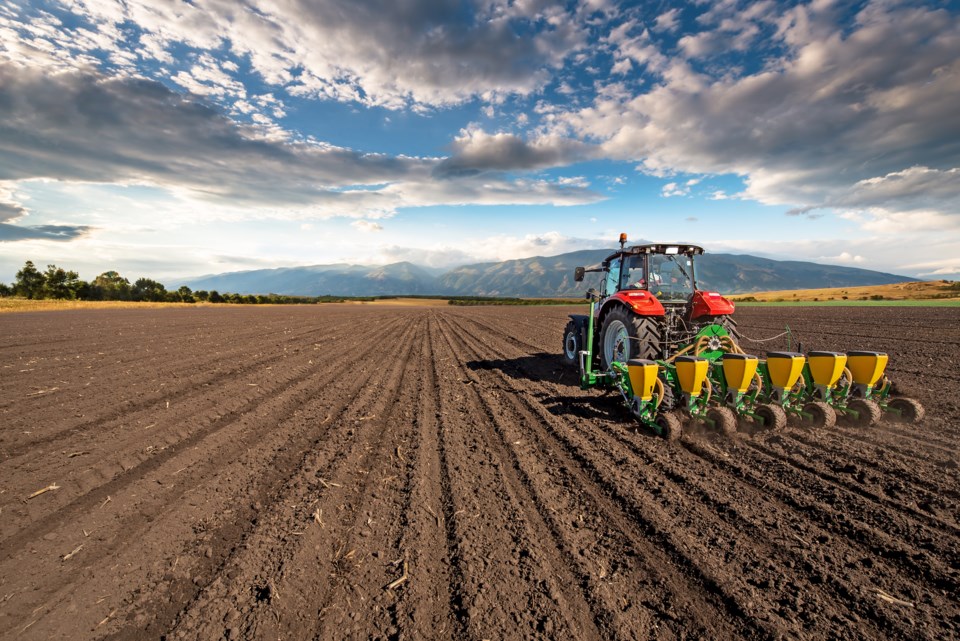EAST CENTRAL — Seeding operations are mostly complete across the province, but there are a few fields still being seeded for green feed and silage.
For the period between May 28 to June 3, all six crop districts in the province are reporting that 99 per cent of the crop is in the ground. Compared to 92 per cent last week and the five-year average (2014-18) of 93 per cent for this time of year. Ninety-nine per cent of spring wheat, durum, canola, and canary seed are seeded, while 98 per cent of oats, barley and flax are planted.
Northeastern Saskatchewan
The northeastern region has basically completed seeding operations with 99 per cent of the crop now seeded, which is up from 90 per cent last week and ahead of the five-year (2014-18) average of 91 per cent for this time of year. Ninety-nine per cent of the barley, oats, flax, canola and spring wheat are in the ground.
Varying amounts of rainfall were reported last week, ranging from nothing to 16 millimetres in the Garrick area. The Hudson Bay area reported 10 millimetres of rain, the Bjorkdale area eight millimetres, the Star City area six millimetres and the Arborfield and Humboldt areas four millimetres. The Garrick area has received the most precipitation since April 1 (58 millimetres).
Topsoil moisture conditions have continued to deteriorate due to strong winds and warm temperatures. Cropland topsoil moisture is rated as 43 per cent adequate, 44 per cent short and 13 per cent very short. Hay land and pasture topsoil moisture is rated as 46 per cent adequate, 43 per cent short and 11 per cent very short. Crop reporters have indicated that rain is welcomed at any time to encourage crop germination and growth as well as hay and pasture growth.
Overall, crops are at or behind their normal developmental stages for this time of the year. Emergence has been delayed in many areas by a lack of moisture. Crops are mostly in poor to good condition. The majority of crop damage this past week was caused by strong winds, flea beetles, cutworms and the lack of moisture.
Farmers are busy completing seeding operations, controlling weeds and moving cattle to pasture.
East Central Saskatchewan
Seeding has basically wrapped up in the region, but there may yet be fields seeded to greenfeed or silage. Ninety-nine per cent of the is now in the ground, up from 91 per cent last week and well ahead of the five-year (2014-18) average of 90 per cent for this time of year. Ninety-eight per cent of the oats, 97 per cent of the flax, 99 per cent of the spring wheat and canola are seeded.
The region received little rainfall last week, with most areas reporting no rain. Eighteen millimetres fell in the Rocanville area; the Lipton and Rhein areas reported one millimetre, while three millimetres fell in the Rama area and 9.7 millimetres in the Ituna area. The Rocanville area has received the most precipitation since April 1 (45 millimetres).
Topsoil moisture conditions continue to worsen due to the strong winds and lack of moisture. Substantial rainfall is needed across the region to help crop germination and growth as well as pasture growth. Cropland topsoil moisture is rated as 14 per cent adequate, 39 per cent short and 47 per cent very short. Hay land and pasture topsoil moisture is rated as nine per cent adequate, 33 per cent short and 58 per cent very short. Crop District 6A is reporting that 71 per cent of cropland and 78 per cent of hay land and pasture are very short topsoil moisture at this time. Timely rains are needed in the coming weeks to prevent significant yield loss.
Crop emergence has been and patchy slow due to the lack of moisture; this has also put the majority of crops behind their normal developmental stages for this time of year. The majority of crops are in poor to good condition. Crop damage this past week was caused by frost, dry conditions, strong winds, flea beetles and cutworms.
Farmers are busy completing seeding, controlling weeds and moving cattle to pasture.
The crop report is provided by the Government of Saskatchewan each week



